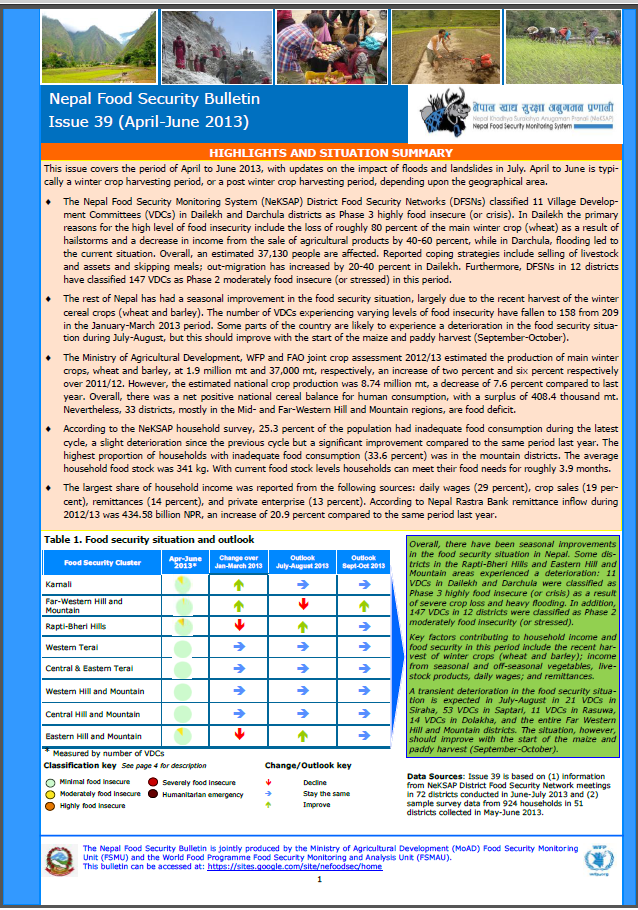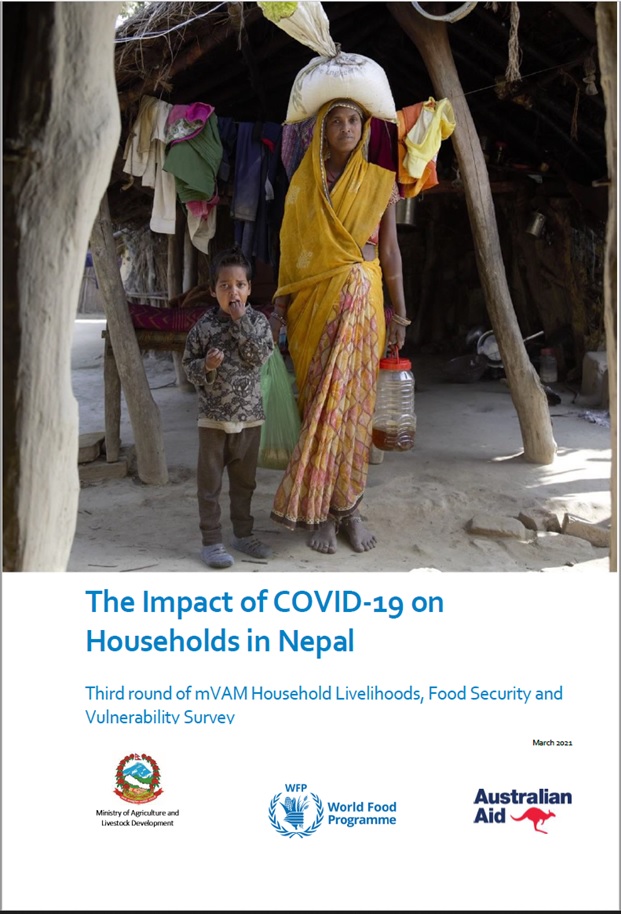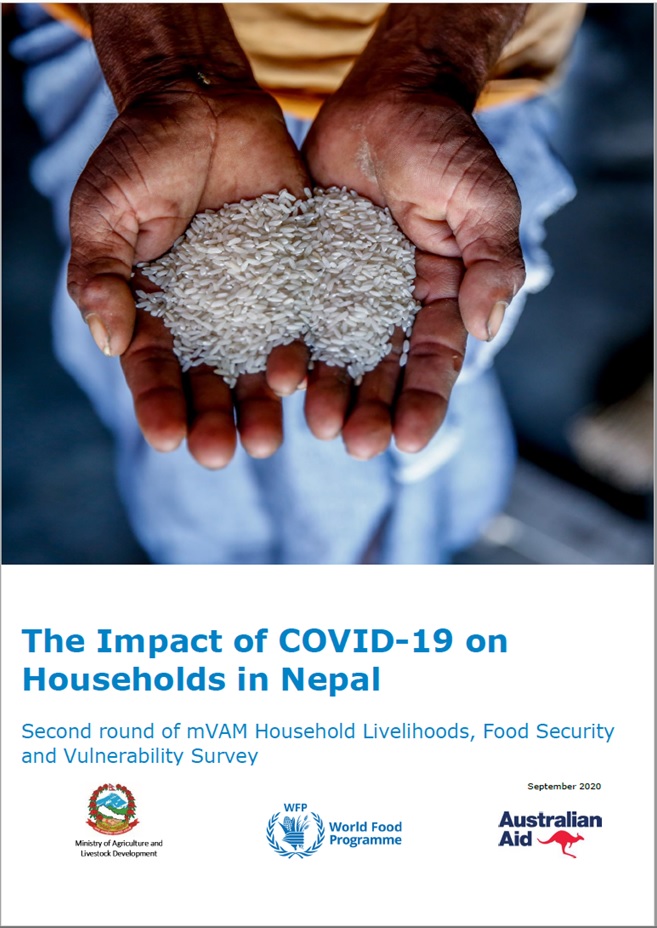Home > PUBLICATIONS > Food Security Bulletins >
Food Security Bulletins
-
Food Security Bulletin No.392013-06-28

The Nepal Food Security Monitoring System (NeKSAP) District Food Security Networks (DFSNs) classified 11 Village Develop-ment Committees (VDCs) in Dailekh and Darchula districts as Phase 3 highly food insecure (or crisis). In Dailekh the primary reasons for the high level of food insecurity include the loss of roughly 80 percent of the main winter crop (wheat) as a result of hailstorms and a decrease in income from the sale of agricultural products by 40-60 percent, while in Darchula, flooding led to the current situation. Overall, an estimated 37,130 people are affected. Reported coping strategies include selling of livestock and assets and skipping meals; out-migration has increased by 20-40 percent in Dailekh. Furthermore, DFSNs in 12 districts have classified 147 VDCs as Phase 2 moderately food insecure (or stressed) in this period.
-
Food Security Bulletin No.382013-05-31

This issue covers the period January to March 2013, and focuses more on the food security situation updates of the Mid and the Far Western Hill and Mountain districts. January-March is an agricultural lean period in Nepal.
209 Village Development Committees (VDCs) across Nepal are reported to be moderately food insecure (Phase II) - a stressed situation where most of the households have minimal access to, or availability of food.
-
Food Security Bulletin No.37 2013-01-31

The food security situation has improved significantly compared to the previous quarter (July—September 2012) and the situation is reportedly stable overall according to the NeKSAP District Food Security Networks (DFSNs) of seventy-two districts across the country.....
News & Events
- Brief on the Food Security Situation in Nepal (Mid-July to mid-November 2017)
- Launch of Food Security Information System for Nepal
- Second Advance Estimate of 2016/17 Wheat Production in Nepal using CRAFT
- Brief on the food security situation in Nepal (Mid November 2016 to Mid March 2017)
- Updated NeKSAP guidance on food security response analysis and district food security monitoring

